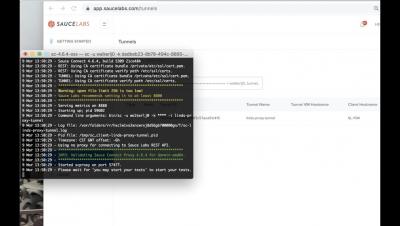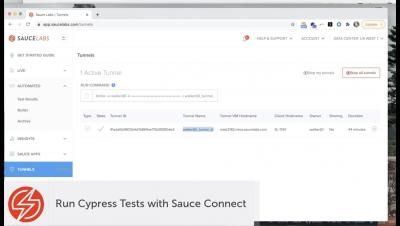Systems | Development | Analytics | API | Testing
%term
Run a Cypress Test with Sauce Connect
Test a Local App with Cypress and Saucectl
This is Appian for Energy & Utilities
The Clear SHOW - S02E01 - clearml-data
Five lessons in leadership from Snowflake CEO, Frank Slootman
Since the start of the pandemic nearly a year ago, there's been one word on the lips of every business leader, analyst, and investor around the world: cloud. COVID-19 fundamentally changed the way businesses operate. In response, organizations went all in on cloud, betting on the unmatched scale, speed, and security of SaaS applications to help them weather the storm. Nowhere was this shift more pronounced that in our own data and analytics industry.
5 types of tests that can be automated for your iOS
A quote from Tim Cook says- “When you care about people’s happiness and productivity, you give them what brings out the best in them and their creativity. And if you give them a choice, they’ll say, ‘I want an iPhone,’ or ‘I want a Mac.’ We think we can win a lot of corporate decisions at that level.” This says a lot about the love for the iPhone we all have!
How to Monitor Azure API Management Performance with the Moesif Plugin
Azure API Management (APIM) is a powerful platform that enables you to publish and scale APIs while ensuring they are secured. One of the great features of Azure APIM is that you can add plugins and transforms to your APIs without any code change or restarts. These capabilities are deployed using XML Policies which are a collection of statements.
Flutter vs. React Native: What's the best cross-platform framework in 2021?
Congratulations! This is an exciting moment to begin building a new mobile app. Cross-platform frameworks have changed everything: thanks to them, developers can now ship performant apps across many platforms with a single codebase. Two of the biggest frameworks are Flutter and React Native, both with a ton of buzz around them. So what’s the right choice for your project?
How to Debug Your Unity Videogame
We’re going to investigate the basic strategies to debug an application created with Unity, from logs to breakpoints, during the development stage. Once an app is in production we can switch to using Bugfender, and we’ll explain this too. To illustrate this tutorial we have created a custom app called The Bugfender Game, a variation of the popular Flappy Bird. Unity is a cross-platform game engine that gives users the ability to create games and experiences in 2D, 3D, VR and AR.











